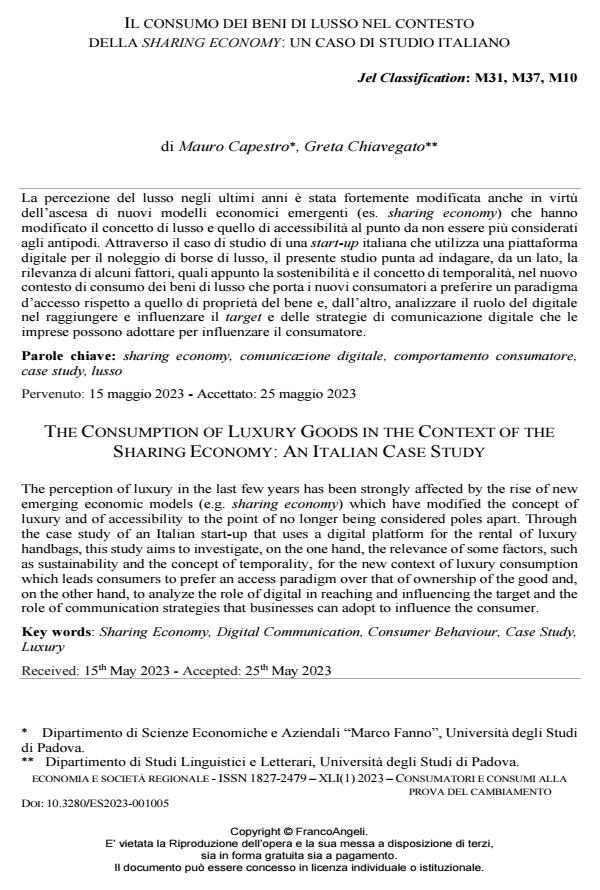Il consumo dei beni di lusso nel contesto della sharing economy: un caso di studio italiano
Titolo Rivista ECONOMIA E SOCIETÀ REGIONALE
Autori/Curatori Mauro Capestro, Greta Chiavegato
Anno di pubblicazione 2023 Fascicolo 2023/1
Lingua Italiano Numero pagine 18 P. 53-70 Dimensione file 306 KB
DOI 10.3280/ES2023-001005
Il DOI è il codice a barre della proprietà intellettuale: per saperne di più
clicca qui
Qui sotto puoi vedere in anteprima la prima pagina di questo articolo.
Se questo articolo ti interessa, lo puoi acquistare (e scaricare in formato pdf) seguendo le facili indicazioni per acquistare il download credit. Acquista Download Credits per scaricare questo Articolo in formato PDF

FrancoAngeli è membro della Publishers International Linking Association, Inc (PILA)associazione indipendente e non profit per facilitare (attraverso i servizi tecnologici implementati da CrossRef.org) l’accesso degli studiosi ai contenuti digitali nelle pubblicazioni professionali e scientifiche
La percezione del lusso negli ultimi anni è stata fortemente modificata anche in virtù dell’ascesa di nuovi modelli economici emergenti (es. sharing economy) che hanno modificato il concetto di lusso e quello di accessibilità al punto da non essere più considerati agli antipodi. Attraverso il caso di studio di una start-up italiana che utilizza una piattaforma digitale per il noleggio di borse di lusso, il presente studio punta ad indagare, da un lato, la rilevanza di alcuni fattori, quali appunto la sostenibilità e il concetto di temporalità, nel nuovo contesto di consumo dei beni di lusso che porta i nuovi consumatori a preferire un paradigma d’accesso rispetto a quello di proprietà del bene e, dall’altro, analizzare il ruolo del digitale nel raggiungere e influenzare il target e delle strategie di comunicazione digitale che le imprese possono adottare per influenzare il consumatore.
Parole chiave:sharing economy, comunicazione digitale, comportamento consumatore, case study, lusso
Jel codes:M31, M37, M10
Mauro Capestro, Greta Chiavegato, Il consumo dei beni di lusso nel contesto della sharing economy: un caso di studio italiano in "ECONOMIA E SOCIETÀ REGIONALE " 1/2023, pp 53-70, DOI: 10.3280/ES2023-001005